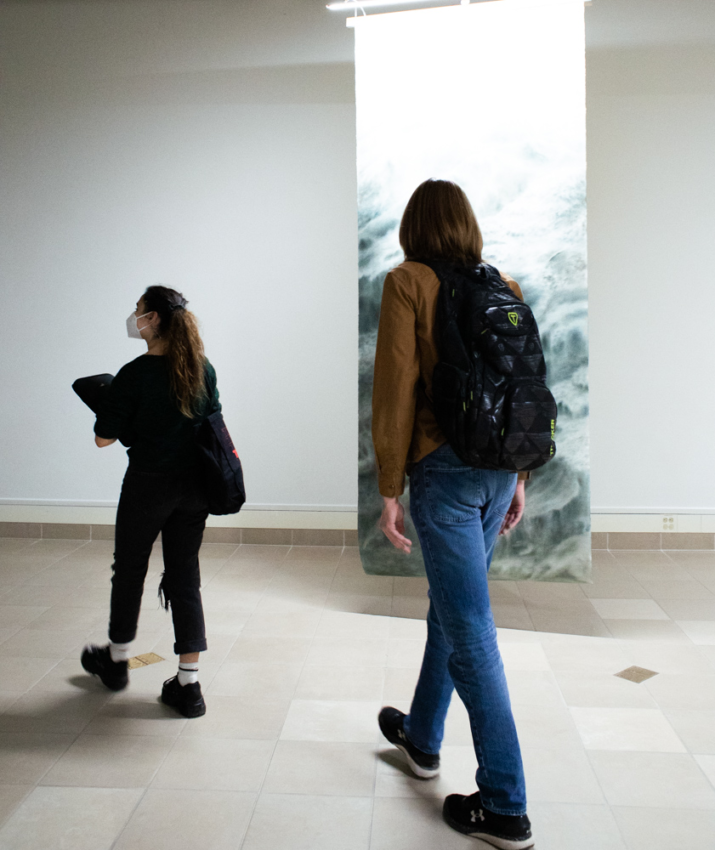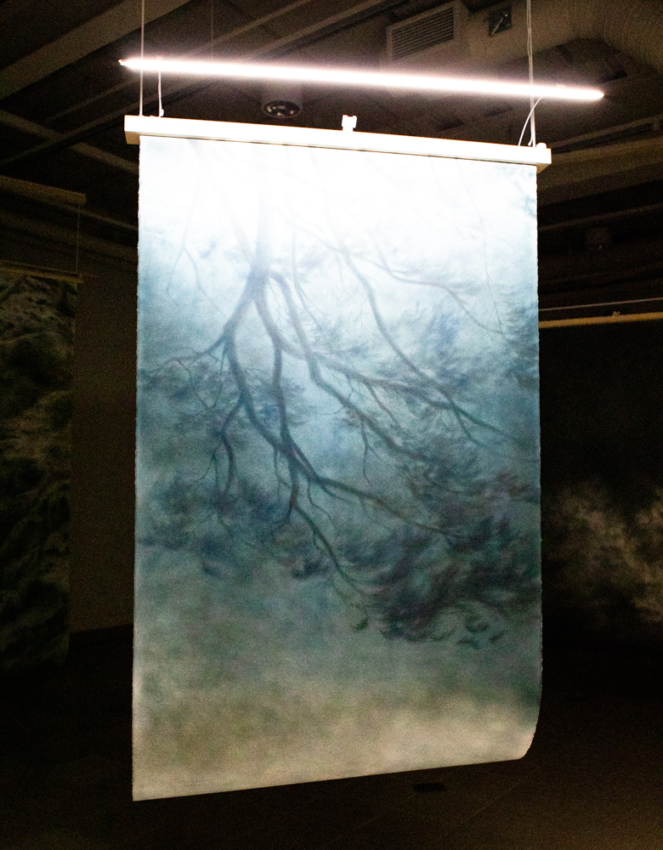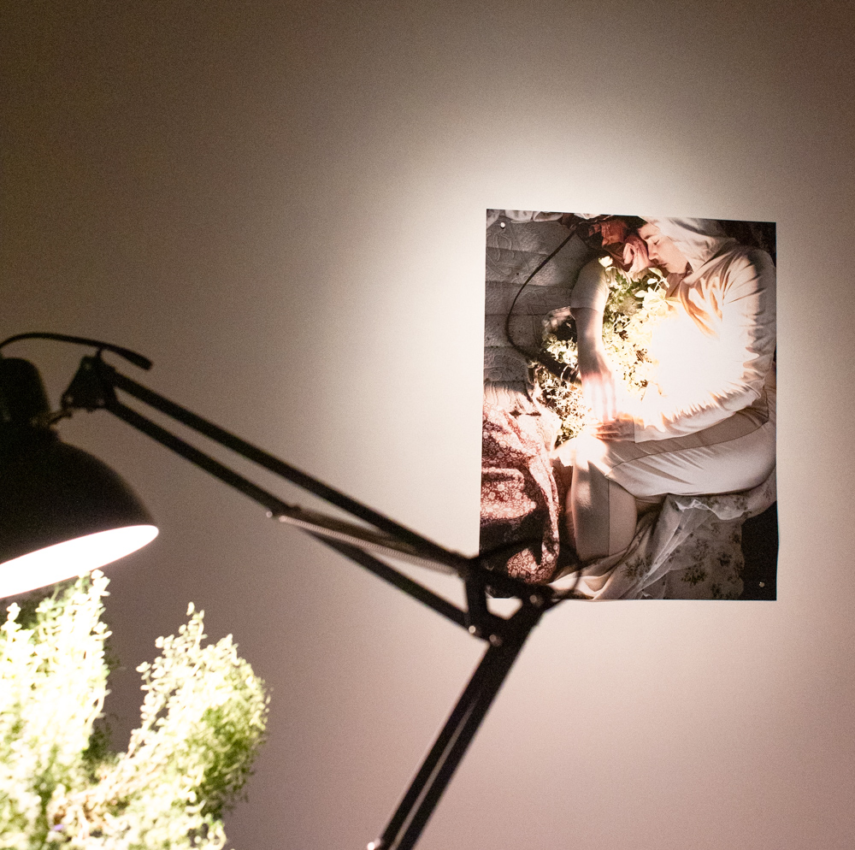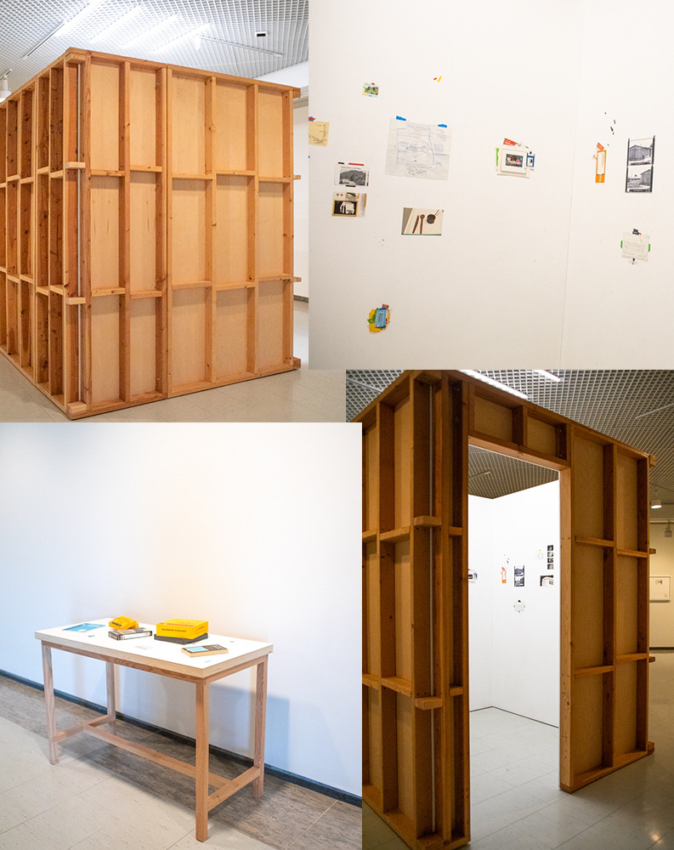
Your introduction to the works of Laura St. Pierre, Andréanne Godin and Anna Plesset.
On Friday, Sept. 23, 2022, Andreanne Godin and Laura St. Pierre unveiled their solo exhibitions, Si Bleu Qu’est notre temps / As Blue As Our Time and Sème la Peau / Seed the Skin, respectively. Jake Moore, a faculty member at USask, led the opening remarks for the gallery alongside artists Andreanne Godin and Laura St. Pierre, and Leah Taylor, curator for Anna Plesset’s Various Records.
“Tonight, we are opening two specific exhibitions and celebrating the continuance of a third. I’m very excited to welcome you into [our] spaces, our stories,” Moore introduced.
Discussing the structure of each exhibit, their themes and connections to one another, Moore said, “The relationship between [all three of] these works is quite powerful. You’ll notice that there’s interior spaces in each of the galleries that move well beyond the usual understanding of the gallery itself as a volume.”
Artist Andréanne Godin is originally from Val-d’Or, Québec, and currently resides and works in Montreal. She works with dry pigment and photography to simultaneously connect and dissect landscapes and architecture to explore the idea of spatial perception.
Reflecting on Si Bleu Qu’est Notre Temps / As Blue As Our Time, the original curator, Marie-Eve Charron, said, “In Andréanne Godin’s childhood memories, the forest becomes a psychic space that her artistic practice frequently revisits. This exhibition is the ultimate expression of this, one that is offered up for the sharing.”
The exhibit features multiple pieces of a meticulously painted forest that emphasize visual engagement through confident lines and deep colours. This, in turn, brings viewers into a psychic space, making them conscious of their physical presence in the forest. Throughout the exhibit, viewers will notice that Godin’s pieces are suspended in the air rather than hung against a surface; the aim of this is to replicate the ethereal, psychic space, resulting in one being brought to hyper-awareness of their physical body.
Referring to her exhibit, Godin said, “I was trying to bring the forest within the gallery for you. It’s this idea of loss. Just know that these lights will accompany you on this walk at night in the woods in [a] place where it can be both scary and comforting and all of the in-between.”
Godin’s ethereal exhibit is accessible to the public by passing through a white curtain that covers the entrance of the gallery. Visitors are greeted by complete darkness until their own movement activates a soft, overhead light that shines down to reveal Godin’s beautiful, atmospheric forest, surrounding onlookers from all sides. As one travels through the gallery, each piece is illuminated with its own light to guide visitors as they travel through the woods.
Si Bleu Qu’est Notre Temps / As Blue As Our Time is located at College Art Gallery 1 on the first floor of the Peter MacKinnon Building.

Laura St. Pierre is a visual artist who works with photography, installation and video from an ecological perspective. St. Pierre lives in Saskatoon and is a sessional lecturer in art and art history at USask.
While introducing St. Pierre’s exhibit, Moore said, “[Sème la Peau / Seed the Skin] will not be shocking; it will be familiar in some ways but I think there’s these pushes that are the implications of ourselves in these responsibilities in ways that will be quite exciting.”
St. Pierre’s Sème la Peau / Seed the Skin extends the work she has been doing in the past featuring herself as a character, “The Sower,” who tends to landscapes in abandoned, post-industrial spaces. St. Pierre explores the simultaneous feelings of intimacy and alienation that comes with the past, present and future events of the human race being pit against all other species.
“It [Sème la Peau / Seed the Skin] is a perfect place for us as humans to experiment and learn that we have a reciprocal relationship that is important and can be developed with the non-human as well. At this point in our history as humans, I believe that is more important than ever,” said St. Pierre.
Through the doors to St. Pierre’s exhibit, visitors are welcomed into a dimly lit space filled with sculptures composed of natural flora and artificially-created plastics. These pieces work together to create a fictional, dystopian setting where nature thrives in a post-industrial world. The wistful nature of each piece layers on top of one another in an evocative and thought-provoking way.
Sème la Peau / Seed the Skin is located at College Art Gallery 2 on the ground floor of the Peter MacKinnon Building.

Si Bleu Qu’est Notre Temps / As Blue As Our Time and Sème la Peau / Seed the Skin are available for public viewing until Dec. 16, 2022. Along with these newly-opened exhibits, Anna Plesset’s Various Records exhibit is also open for public viewing until Dec. 16, 2022.
Anna Plesset is a New York-based artist who works with sculpture, drawing and paint to reframe familiar historical narratives and explore how history, memory and knowledge are constructed and mediated.
Plesset’s Various Records uses a combination of paintings, video, drawings and sculpture to highlight the ways we make connections between past and present through objects and places we encounter in life. Plesset based the works in this project around a 24-minute film composed of her grandfather’s experiences serving in World War II as a psychiatrist. This exhibition acts as an archive of the power and impact of place, time and memory through ephemera.
“Various Records utilizes a variety of approaches including trompe l’oeil painting, drawing, video, and sculpture to look at physical and psychological relationships between war, trauma, suffering, and everyday life,” said Taylor.
Through the exhibition doors, viewers are greeted with a hauntingly open space bathed in warm lighting. Each piece is either hung on the gallery walls or displayed on a table with a great amount of space separating the individual works. In the center of the room sits a seemingly simple, small wooden structure with visible studs and screws; a narrow doorway presents itself as viewers walk around the structure. Through the doorway, decades of history close in on visitors, guiding them through the past in the almost-cramped space. The interior walls are plastered with both physical paper remnants of Plesset’s grandfather and her own handwriting, which frantically travels from corner to corner as if she was searching for an answer to an unsolvable question.
Various Records is located at the Kenderdine Art Gallery on the second floor of the Agriculture Building.

“Our stories are us,” Moore said as she closed the opening remarks, “Our stories will make us be different, better, the same, worse [in] how we tell these stories and what will be the way we deliver them now.”